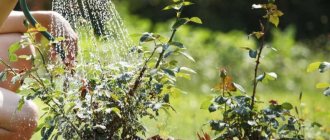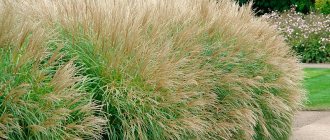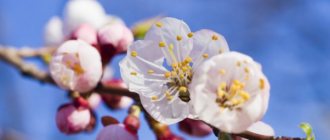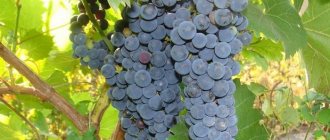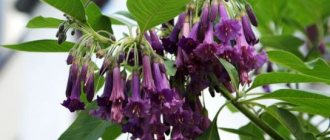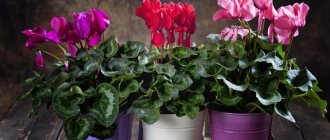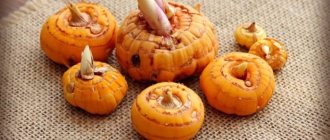When buying ornamental grasses, we often fall for their unpretentiousness, believing that there will definitely be no fuss with them. In the first summer of planting, they actively grow and develop, delighting the owners, but next spring they may not turn green.
This is due to the fact that all the inflexibility of cereals is explained by the type of soil, watering and fertilizer, but many of these herbaceous plants react extremely negatively to frost. Ornamental grasses with the most striking appearance are often natives of hot countries, and their “wintering” mechanism is simply not provided by nature.
But you shouldn’t give up growing these lush bushes with interesting colors; you just need to choose those cereals that are bred and adapted to regions with a similar climate and are characterized by increased winter hardiness.
We have already advised which ornamental grasses and grains are suitable for the northern regions; today we will talk about those representatives that will feel better in a plot in the middle zone (climate zone 5-6).
Arundo reed (giant reed)
It’s not for nothing that the second name for reed arundo is giant. The stems of this cereal with linear-lanceolate leaves can grow 4-6 m in height, and long rhizomes very actively “develop” the soil. If you decide to have this plant in your garden, remember that it is extremely aggressive and fast-growing and requires restrictions on the territory.
Arundo prefers sunny, damp places (an area near a pond is quite suitable). It blooms in autumn with thick lush panicles, requires spring pruning to a height of no more than 10 cm and shelter for the winter.
The varieties Variegata and Versicolor are most often cultivated for decorative purposes - the first has leaves with longitudinal wide white stripes, and the second has bright yellow-green leaves.
Lightning blue
Blue lightning is another tall grass with glaucous leaves and blue-violet panicles. It also needs moisture, planted together with flowers with a similar growth regime, or decorates the edges of artificial ponds.
Planting trees on the siteKerria or Keria: photo and description of the shrub, rules and subtleties of growing a plant with yellow flowers
Ornamental shrubs in landscape design blooming in autumn
The Miscanthus family deserves special attention. These giant-sized cereals with an erect stem have many varieties that differ in color and shape. This light-loving and moisture-loving plant, with a height of 80 cm to 3 m, needs protection from frost.
Used in mixborders, for decorating ponds, luxurious bushes of Chinese and sucrose miscanthus can become an exquisite decoration of green lawns.
Veynik
Huge reed bushes can be found all over the world. Its height reaches a meter, so it is perfect for the role of a tapeworm or a vertical part in a group planting. Used in borders and hedges. In summer, the stems and spikelets of reed grass are green; by autumn they partially turn yellow, and in winter, covered with frost, they become pearly and continue to decorate the garden.
The most popular varieties of reed grass: Avalanche, Waldenbush, Karl Forster, Overdam.
Reed grass is propagated by dividing the bush, in May, every 5-7 years. If this is not done, the bush will outgrow and become disproportionate. It grows well in any soil, but if you give it a sunny and fertile area, it will become the pride of your garden in a couple of years.
Somali Cyanotis (Cyanotis somaliensis)
Tropical perennial from the Commelinaceae family. Numerous creeping shoots of the plant are dotted with elongated, pointed leaves of bright green color. Along the edge and on the underside they are covered with long white hairs. It blooms with small bright blue flowers.
@FarOutFlora, Flickr
@slogrowers, Instagram
Imperata cylindrical
Although imperata is native to the tropics, this perennial grass has adapted well to our climate zone. This moderately moisture-loving plant prefers full sun, but can also grow in partial shade. Well-drained soil is preferable for it.
The thick, dense bases of imperata quickly crowd out other vegetation in the vicinity.
Most often in gardens you can find the Imperata variety Red Baron, whose leaves at a young age are bright green with crimson-red tips, and as they grow they actively turn red along their entire length, becoming blood-red by autumn. Against the background of foliage of such a rich color, silvery fluffy spikelets look gentle.
Flowering shrubs
Jasmine
A spreading shrub that can be presented as a vine, evergreen or deciduous variety. The plant is frost-resistant and does not require special knowledge of care. From June to July it fills the garden with the persistent aroma of jasmine and pleases the eye with large white flowers that completely cover the large bush. The plant is thermophilic and prefers systematic (at least once a week) watering. It can also grow in shaded areas, but this will shorten the flowering period and growth rate.
Derain white
A deciduous shrub that will become an elegant decoration of the garden, even in winter, thanks to the rich burgundy color of the shoots. The plant blooms twice a season and pleases not only with its exquisite flowers that cover the entire upper part of the shoots, but also with white fruits that appear on the branches in the fall. In the autumn, this culture fully reveals its beauty, painting the foliage in all possible colors, fragrant with flowers and fruits. Derain tolerates urban conditions well, does not require fertilizers or special maintenance conditions, and grows quickly and reaches about 5 meters in height.
Deytsia
A long-term garden decoration, it can remain in one place for up to 25 years, without growing - it does not reach a meter in height, and spreading shoots can be trimmed. This culture gives amazing beauty during the flowering period, which occurs at the end of May. Medium-sized flowers are combined into large inflorescences of various shades - from white to red.
Lilac
A fast-growing and flowering shrub, when choosing varieties of which you need to pay attention to several varieties: Meyer, Amur and Hungarian lilacs. These crops are particularly frost-resistant and undemanding in fertilizers. This shrub develops favorably in cities, despite dust and toxic emissions. The flowering period is quite short and lasts no longer than a few weeks. An important fact is the need for annual cutting of root shoots to form foliage in the next season.
Japanese quince (chaenomeles)
The extravagant appearance of this plant will surprise guests and delight the household. Quince begins to bloom in May, and with proper care it will delight you with red-orange flowers until autumn. The flowers are medium in size, up to 8 centimeters in diameter, and are evenly distributed throughout the bush. By autumn, the bush produces nutritious, tasty fruits that are used in medicine and cooking. The sun-loving seedling is resistant to drought and unpretentious from the first years of growth, but it does not bear fruit in a shaded place. The shrub is not large - up to 2 meters in height and spreads shoots closer to the top.
Hydrangea
Some varieties of this famous plant grow as small ornamental shrubs. The plant does not tolerate cold well, so perennials are dug up in November and returned to open ground in May. Seeds are sown at the end of May, when the night frosts have already ended. It is important to water the plant and rid the soil of weeds, and treat the shoots and leaves with pest repellents.
Clematis (Clematis)
A liana shrub that is difficult to trim, but at the same time blooms elegantly and brightly. Flowers have different diameters on one bush - from 8 to 25 centimeters, and also differ in the shape of the inflorescence - star-shaped, bell-shaped, and the petals can be either glossy or double.
Cinquefoil shrub
A compact shrub that landscape designers often use to fence off various flower beds or flower beds on a site. The shrub blooms from early summer until the end of September. The plant is undemanding to soil or fertilizers, but during dry periods it needs abundant watering and spraying. It is also worth considering intolerance to dust and exhaust gases. The variety of varieties offers an abundance of flowering colors to suit every taste.
Rhododendron ponticus
See description above.
Lavrovishnya
See description above.
Mahonia holly
See description above.
Feather grass
This genus of short-rhizome perennial grasses includes more than 300 species, many of which are suitable for decorative plantings on the site. Several types of feather grass are suitable for middle latitudes - feathery, thin and shiny, which differ in the timing of flowering, as well as the color and width of the foliage.
All of them are light-loving, frost- and drought-resistant, and love dry, non-acidic, well-drained soils. Feather grass is a slow-growing plant, but very durable and unpretentious, capable of turning your site into a real steppe, swaying in the wind. They reproduce by seeds and by dividing the bush; the leaves of the feather grass are cut off in the spring, and the flower stalks in the fall.
Decorative grass and design
The plant world is very complex and diverse, and therefore some of the plant groups are combined into large families.
One of them is herbs, which people include not only cultivated plants, but also ordinary weeds, which is quite normal.
However, we recommend that you look specifically at the photos of ornamental grasses. By the way, even an ordinary lawn is a grass, and an ornamental one at that, so you already understand how diverse this group of plants is.
Despite the fact that large plants, such as trees and shrubs, are much more visible on the site, and flowers stand out more in their beauty, ornamental grasses are a very powerful tool in the hands of a landscape designer.
In total, ornamental grasses can be divided into three large categories - cereals, artificial and lawn.
Each type of grass has its own role, quite important on the scale of the site and the territory that is adjacent to it, and therefore you need to learn how to use them.
Keleria (thin-legged) gray
This genus of perennial herbs with narrow-linear leaf blades grows to only 30-40 cm in height. But its dense turf with silver-blue leaves looks very elegant in the garden. Keleria blooms in June-July with cylindrical spike-shaped panicles.
Thin-legged gray looks beautiful on rocky hills and rockeries, tolerates cold winters well, but needs additional drainage and loves the sun very much. Propagated by seeds and dividing the bush, requires pruning in March-April.
In landscape design
The scope of application of lagurus is the design of borders, alpine slides, and landscaping of areas along roads. In harmony with the rocky landscape and sandy paths.
On the lawns
Often the haretail is used to fill empty spaces in the lawn or flower bed. Looks most advantageous against the backdrop of flowering shrubs .
It highlights the brightness and beauty of the rose garden. The haretail itself can serve as a background for low-growing grasses with different leaf colors, such as coleus and tenacious. The best neighbors of the lagurus will be the same unpretentious dahlias, asters, chrysanthemums, and garden daisies.
In addition, haretail is grown in pots or flowerpots for landscaping loggias, balconies, summer verandas, and enclosed terraces.
Other uses
Dry haretail spikelets are actively used when decorating bouquets, creating flower arrangements, and various kinds of crafts. Dried fluffy heads are painted in bright or pastel colors. The simplest coloring method is to spray aerosol dye onto a bunch of dry plants. After painting, the lagurus is dried. Then use it for its intended purpose. High-quality dried and painted plants retain their decorative properties for more than 2 years.
Miscanthus
The green “fountains” of miscanthus are good in themselves, and during flowering, their pink or silver panicles attract all eyes. Depending on the variety, the plant can reach from 0.8 m to 2 m in height, and with age it can grow up to 2 m in diameter.
The most popular miscanthus varieties: Little Kitten, Yaku Jima, Adagio, Kleine Silberspinne (compact), Kleine Fontäne, Ferner Osten, China, Flamingo (medium), Goliath, Grosse Fontäne, Professor Richard Hansen, Rotfuchs (large).
All miscanthus love water and sun, so if you want to grow a large, lush grass, do not forget to water the plant and give it a place on the sunny side of the site. Active growth of miscanthus can become a problem for its neighbors in the flower bed, so either plant it in privacy or dig a border tape around the roots to a depth of at least 30 cm.
- Miscanthus - a grass for a garden in the Provence style
Cereals can decorate the garden no worse than beautiful flowering plants. Miscanthus is a clear confirmation of this.
Mace Bearer
The dense, seemingly bristling bushes of the gray macebearer are ideal for decorating borders 20-30 cm high. This light-loving and fast-growing ground cover plant takes root well in sandy soils of the middle zone.
- Indoor ventilation
Choosing grass for the lawn
Deutzia is blooming - summer is coming
Molinia
Until recently, this unpretentious ornamental grass was more often found in swamps than in garden plots, but now designers appreciate it. The modest plant requires minimal care only in the first two seasons, and then remains attractive for decades without your intervention.
The easiest way to grow is blue molinia, but if you want maximum splendor and bright colors, you should pay attention to reed molinia and varieties such as Bergfreund, Fontane, Staefa.
Molinia is propagated by dividing the bush, care is reduced to watering during dry periods, and it can cope with weeds on its own. Lightning wakes up late, so don’t rush to trim old leaves in the spring.
Lawn grass
Owners of personal plots who do not plan to lay out beds for the sake of obtaining vegetable crops often set aside free territory for a lawn. Its arrangement requires significant effort at the stage of planning and preparing the site. The selected area is dug up, carefully selecting weeds, stones, and foreign objects, leveled, and enriched with fertile soil.
You can create a lawn by sowing a mixture of herbs, ready-made or made yourself, or choose a rolled version. The grass mixture usually consists of grasses: meadow bluegrass, red fescue, thin bentgrass, perennial ryegrass, creating a dense, bright green covering.
Read more about site preparation, selection and planting of lawn grass in the article on our website.
An excellent option for simulating a meadow is a Moorish lawn with various combinations of cereals and flowering plants. Chamomile, clover, calendula, cornflower, bluebell, eschscholzia, flax, poppy, nemesia, toadflax and other annual and perennial flowers will create bright “sunny” spots against the background of green cereals.
The Moorish lawn delights with colors and aroma, does not require much care - the grass in its composition does not require soil fertility and regular mowing
An easy-to-use lawn roll is a turf of perennial grasses that is rolled out over the surface of the soil, like a carpet. It is grown in the field: the seeds are sown on special mats made of natural or artificial fiber.
Muhlenbergia hairy (deer grass)
Muhlenbergia is a warm-growing herbaceous perennial native to North America. In our latitudes it forms curtains from half a meter to a meter in height and width. Its leaves are needle-shaped - very narrow and hard. Dark green in summer, by autumn they acquire a bronze or copper tint and retain this color for a long time in winter. The plant blooms in August-September with very fluffy pinkish panicles, which then become purple, and even later – light brownish.
Muhlenbergia prefers slightly acidic loose soils, sunny or semi-shaded places, and is otherwise extremely unpretentious. It only does not tolerate severe frosts and requires shelter for the winter. Propagated by seeds or dividing the bush, needs spring pruning.
Pampas grass (Cortaderia cello)
A perennial herbaceous grass native to South America.
The plants are tall (stem 1.5-3 m), form very dense turf (tussocks). The leaves are linear, long, arched, with a sharp edge and tip, rough, bluish-green or silver-gray.
The plant is dioecious. Flowering time is from August to October/November. The inflorescence is a thick silvery panicle 30-50 cm long. The flowers are mostly small. The female flowers are covered with long silky hairs, making the inflorescences appear silvery-white or pinkish; the male flowers are naked. Even faded inflorescences remain decorative for a long time.
There are decorative varieties of Cortaderia cello with yellowish, reddish or purple panicles.
Cortaderia variety Stars and Spice in 2016 earned an honorary bronze at the prestigious international exhibition of ornamental plants Plantarium, which was held in the Dutch city of Boskop. And tall plants of the Sunningdale Silver variety with very fluffy panicles once received an award from the Royal Horticultural Society of Great Britain.
Pampas grass easily adapts to environmental conditions and can grow in different climate zones and soils, although it will prefer relatively fertile, well-cultivated soil in a brightly lit area. Basic care consists of systematic watering. Annual (early spring) feeding with complex mineral fertilizer is also important. A shelter of dry grass and leaves will help the plant overwinter in the middle zone.
Because Cortaderia produces so many seeds, it is considered an invasive plant in some countries.
- Pampas grass - features of planting, care, wintering
Everything you wanted to know about growing cortaderia.
Sheep evergreen
Helictotrichon, evergreen oat, viviparous oat - this cereal has many names and one essence. Its bright, lush bushes can be an ideal border, fit into any flower bed or grow in a container. Frost resistance and unpretentiousness make it a real find for our climate or for novice gardeners.
The most popular varieties of sheep: Pendula, Robust, Saphirsprudel.
The main requirements of sheep are poor soil, sunlight and dryness. From excess nutrition it gets sick, in the shade it loses the blue tint of its foliage, and when it is over-watered, its roots begin to rot and the leaves become covered with rust. For maximum decorativeness, the bushes should be divided every three years.
Summer
The summer, generous with gifts, has prepared an incredible variety of colors. But you shouldn’t forget about white flowers. For example, there is something mesmerizing and solemn about white irises . This unconventional coloring makes the flowers even more unusual. But remember: in order for irises to delight you with flowering, you should protect them from “wet feet.” So plant them in raised beds.
Another plant that has changed its usual blue-violet hue to white clothes is the bell . Low-growing bells make good borders, tall ones look good in the center of a flower garden. But if you want to make this plant stand out from the crowd and emphasize its unusualness, you can plant the bells in a container.
Lilies are one of the most popular perennial plants. Their flowers can take on a variety of shades. There are also types of lilies with white buds that will fit perfectly into a monochrome garden. And what a scent these magnificent flowers exude! No wonder the ancient Greeks considered them divine. It was white lilies that were called drops of milk of the great goddess Hera. This plant can be planted even in the background of a flower garden - it is impossible not to notice it.
Perennial phlox with milky flowers will decorate the garden all summer. Planted in different places in the garden, these plants unite the composition into a single whole and expand the space. As well as the handsome white garden nivenik , whose flowers are best planted in a group.
Other plants with white flowers that bloom in summer: poppy, sedum, foxglove, chickweed, edelweiss, yucca filamentosa.
Pennisetum foxtail
This warm-growing dense-turf grass can grow up to a meter in height and up to one and a half meters in width (depending on the variety). It has narrow, hard, rough, beautifully curved bright green leaves, sometimes turning yellow in cold weather, and fluffy spikelets reminiscent of a fox's tail (hence the name).
The plant prefers sheltered from the wind, sunny or semi-shady places with well-drained soil. It is advisable to cover the pennisetum for the winter, although it is considered relatively cold-resistant. Dwarf species of this cereal are also suitable for container growing. In this case, the pot with the plant is brought indoors for the winter.
The best ornamental varieties of pennisetum foxtail: Hameln (tall, with green leaves and beige-brown spikelets, blooms in July), Little Bunny (short, with lush green leaves in summer and golden yellow leaves in autumn), Moudry (medium size, with green leaves and lilac-brown spikelets, blooms in August-September).
Flowering of different varieties
The flowering period of lagurus depends on weather conditions . In moderately cold climates it blooms from July and delights with fluffy panicles until the beginning of September. In the southern regions, “bunny tails” appear by May. The varietal affiliation imposes certain characteristics on the flowering period of the haretail. The differences are shown in the table.
| Variety | Flowering time | Panicle size | Coloring of spikelets |
| Lesya | May - July | Round shape, length 4 cm, width 2 cm | Pinkish, milky white, creamy shade |
| Steppe Wanderer | July August | Elongated, 3-4 cm long | At the beginning of flowering they are light green, towards the end of the flowering period they become almost white |
| bunny tail | Early June - August | Egg-shaped, length up to 5 cm | Gray-white |
| Nanus | Mid July - August | Round, fluffy, no more than 2-3 cm long | Gray-white, cream, yellowish-straw |
It is better to cut lagurus for drying into dried flowers at the end of July/beginning of August . Cutting is done after the dew has dried - after lunch, in the early evening.
Perlovnik ciliated
This perennial long-rhizome grass loves sunny places and light, moist soils. It grows in dense tussocks that form narrow light green leaves. Flower stems about 60 cm high appear in late spring or early summer, forming a whole cloud of creamy-white graceful drooping panicles, for which the cereal is valued. The spikelets are decorative for a little over a month.
The plant is quite unpretentious. Pearl barley reproduces by dividing the bush or by seeds; it requires pruning in August.
Fescue
A perennial herbaceous grass, in nature it is distributed both in the subtropics and in regions with temperate and cold climates.
Plants of varied height (0.2-1.5 m), with or without creeping rhizomes. The leaves are linear, smooth, rough or pubescent, often rolled (folded) lengthwise; panicle inflorescences - spreading or compressed.
Fescue is a cold-growing (cold-season) cereal - it begins its growing season in early spring and is most effective in its first wave at the very beginning of summer.
Gardeners value fescue for its great variety of sizes and color forms, as well as its adaptability to different environmental conditions. Thus, gray fescue, which can grow even on poor dry soils, has bluish-silver leaves, and the plant itself forms dense, elegant, round clumps. Frost-resistant red fescue easily tolerates partial shade and flooding, and it received its name because of the color of the elegant panicle inflorescences decorating the even green grass stand. Amethyst fescue forms loose, spherical tussocks, its tough foliage is blue-green, and its flower panicles are usually greenish-purple. Salt-tolerant and winter-hardy Valis fescue easily tolerates mechanical damage, easily reproduces by self-sowing and will delight you with its bright green curtains for a long time.
In general, this plant has several hundred species (and each has several more varieties), many of which are valuable ornamental plants.
- Unpretentious fescue for flower beds and lawns - choosing varieties and learning to grow
Red, gray, blue, silver, amethyst, gray, glacial, reed - what type of fescue adorns your site?
Bulbous ryegrass
Small striped bushes of bulbous ryegrass are loved by designers for their easy shaping and low aggressiveness. They spread much less than most grains, they can be given any shape, and after a couple of weeks after cutting to zero, they turn green again.
Caring for ryegrass is simple: it is cut three times a season, fed with diluted compost once a year and watered during dry periods. Diseases and pests do not attack him, and he copes with weeds himself.
Advantages and disadvantages
The advantages of using haretail, as well as nuances that require special attention, are presented in the table.
| pros | Minuses |
| Spectacular appearance | Annual, must be planted every year |
| Resistant to diseases and pests | Does not tolerate frost |
| Undemanding to soil | Loves sun, warmth, watering |
| Various uses (at home, outdoors, in bouquets) | Propagates by self-seeding, can clog other plantings |
| Children like it | May cause allergies in sensitive people |
Understanding the strengths and weaknesses of using lagurus will allow you to use the ornamental plant with maximum efficiency and avoid disappointment and failure.
Reviews
Gardeners like Lagurus due to its low price, availability of seed and ease of care. In the absence of a summer cottage, it grows well on the balcony .
Even an inexperienced gardener managed to grow a “fluffy” one the first time. Lack of time and effort to care is not an obstacle to planting a haretail in the country. Tender dried spikelets of the plant are used for thematic photographs and creating home comfort. Creative people love Lagurus for the endless possibilities of experimenting with its use.
Growing haretail together will bring joy to both adults and children, and will teach the basics of floriculture and floristry.
Note ! Judging by the reviews of gardeners, domestic cats liked the delicate shoots of the haretail.
You can read the opinions of gardeners about haretail here, here, here and here.
Sesleria
Of the existing types of Sesleria, only 4 are used in landscape design - blue, autumn, shiny and black-flowered. Each of them is good in its own way, has a different size and color of leaves and inflorescences.
Growing rules for all types of Sesleria are general. It can be propagated by seeds or by dividing the bushes, which must be done every 4 years. It grows quietly in poor soils, rarely needs watering and does not require fertilizing at all. Sesleria looks brighter in the sun, but grows well in partial shade.
Spicy-flavoring herbs
The name of this group characterizes the main purpose of the plants - use as seasonings. Most of them have medicinal value, being a valuable source of vitamins, organic acids, mineral salts, and biologically active substances. Among the spicy crops there are both annuals and perennials.
Cooking is unthinkable without spices, fresh and dried; plants can also be used to decorate the garden
Annual crops: anise, basil, chervil, coriander, annual marjoram, borage, arugula, trigonella (blue fenugreek), savory.
Borage is often pulled out like a weed. In Western Europe, it is added to salads, cold soups, fish and meat dishes, and drinks; Iranians drink tea from dried flowers
Suitable perennial ornamental herbs for the garden include: hyssop, lavender, lofanthus, lovage, perennial marjoram (oregano, oregano), lemon balm, monarda, peppermint, rosemary, rue, thyme (thyme), vegetable fennel, sage, tarragon.
Perennial marjoram is an excellent honey plant, an aphrodisiac, and has medicinal properties: it helps with various types of pain, insomnia, and hormonal disorders.
The increased interest in herbs is not a newfangled phenomenon, but a return to the roots. Fragrant (pharmaceutical) gardens were cultivated back in the Middle Ages.
Growing these crops is not particularly difficult. Both the seedling method and direct sowing in the ground are suitable for them, which is best done in accordance with the recommendations indicated on the bags of seeds (for example, you can purchase such a selection of seeds on AliExpress).
At the dacha, herbs are placed not only in ordinary beds, but also used to dilute beautifully flowering plants in the flowerbed, and filled with them in various containers.
If the land area is small, boxes and pots can always help out. Spicy greens can also be grown on balconies
You can create an independent flowerbed from aromatic herbs, having previously read the descriptions of the participating plants in order to correctly take into account their requirements for environmental factors, height, and decorative qualities.
Option for combining spicy vegetables in a rock garden
Composition of spicy green herbs in a mixborder
The following simple diagrams are compiled taking into account all the rules for placing plants and the advice of experienced gardeners. Tiering, contrast, and planting density are observed, which ensures high decorativeness.
Phalaris
The charming falaris is not as simple as it seems. It grows quickly, sends out long rhizomes in different directions, and even with a border tape it is not so easy to fence it off. Despite this, it may be suitable for growing as a ground cover or in areas where you do not intend to plant anything else, for example, on the outside of a fence. The bushes are easy to form, tolerate pruning well, the leaves and inflorescences can be used in bouquets, including dry ones.
The most popular varieties of Phalaris: Elegantissima, Luteopicta, Tricolor, Snow Pink.
Like other ornamental grasses on our list, falaris is unpretentious, requiring only loosening and rare watering, equally resistant to drought and waterlogging and is not susceptible to diseases and pest attacks.
Growing conditions
The haretail grows everywhere. Prefers coastal areas, sandy beaches, rocky slopes with sufficient drainage layer of soil. Often found in pastures, near roads, and wastelands .
Natural distribution area
North America is considered the homeland of lagurus, from where it spread to other continents. Wild haretail is observed in the regions:
- North Africa;
- Western Asia;
- Caucasus;
- Eastern, Western, Southern Europe.
The haretail has also penetrated into island territories. Lagurus thickets are found in Sicily, Sardinia, Madeira, Crete, Corsica, the Canary and Balearic Islands.
Where is it grown?
Haretail is cultivated in various parts of the world. Russian gardeners and designers also liked the delicate fluffy lagurus cones. as an annual plant even beyond the Urals, in the Far East and Siberia .
Sustainability
The plant is unpretentious, but has some features:
- Sunlight is important for the formation of lush green mass; in the shade the plant will be frail. However, lagurus does not tolerate direct, scorching rays; the bright midday sun leads to burns on the leaves.
- The haretail is thermophilic; 20-250C are optimal. Autumn cold provokes slower growth and yellowing of leaves. The “fluffy” simply will not survive the cold winter.
- Lagurus will withstand short-term drought, but the plant is not ready for a long period without watering. However, you are not ready for excess moisture. Excess moisture will lead to rotting of the roots and death of the hare.
Note ! "Hare's tail" has good immunity and is almost unaffected by pests - insects, viruses, fungi and bacteria.
Pike
Some ornamental grasses not only are not afraid of cold weather, but even wait for it. For example, pike leaves grow twice a year - in early spring and autumn, when it is cold and humid outside, and in the summer heat they are dormant. The leaves of different varieties of pike can be green, cream, golden, striped or plain, and the stems, reaching one and a half meters in height, are crowned with panicles of all shades from yellow to black.
The most popular varieties of pike: Bronzeschleier, Fairy's Joke, Goldgehänge, Goldschleier, Ladywood Gold, Northen Lights, Tardiflora, Waldschatt.
It is enough to plant a pike once with seeds or by dividing a bush and you can forget about care forever. Seasonal pruning of inflorescences and old leaves should be carried out in early spring, or better at the end of winter, because the snow will not have time to melt when it begins to grow again. Pike can reproduce by self-seeding, so it is best to plant it on the lawn - there it will not grow due to frequent mowing.
Average cost in the Russian Federation
The usual price for a package of seeds weighing 3 g from Russian representatives is within 12-35 rubles. The cost depends on the type of seed, supplier, delivery region and method of receipt . There are small packages of seeds, declared as elite, with a price tag of 120 rubles. Planting material is sold on the websites of hypermarkets, in regular gardening stores, and on various Internet sites.
There are offers with ready-made bouquets of lagurus painted in different colors. A separate bunch of dried flowers costs 300-400 rubles.
Plectranthus tomentosa
Representative of the Lamiaceae family. The second name - “indoor mint” - was given to the flower for the pronounced minty aroma emanating from the leaves, if you touch them.
The bush is multi-stemmed, with long drooping shoots and numerous rounded green leaves with a wavy edge. Each leaf and stem is covered with sparse colorless hairs.
Important! The flower is very light-loving. When there is a lack of lighting, it stretches out greatly.
@succulentsdepot.com
